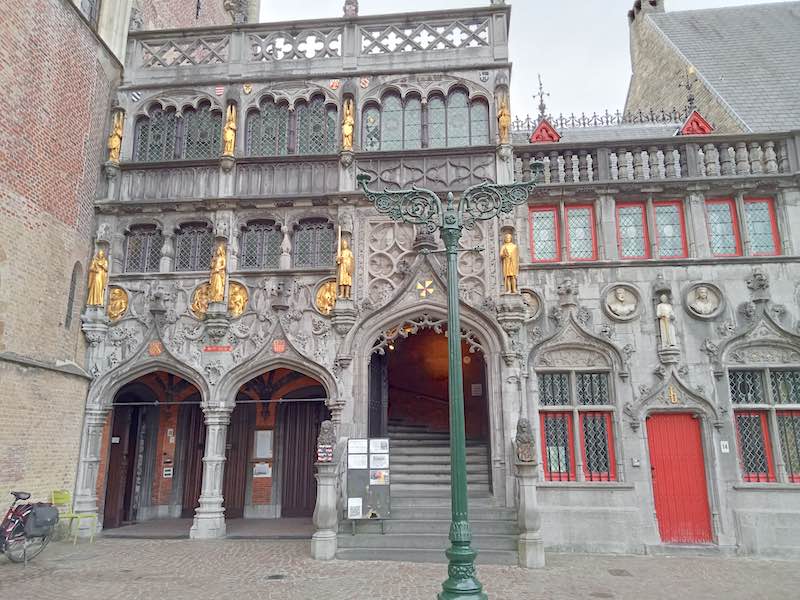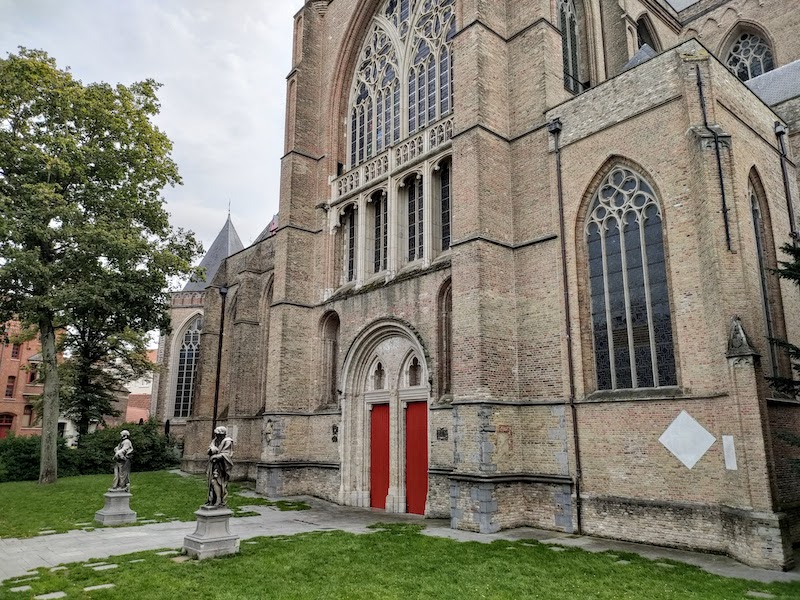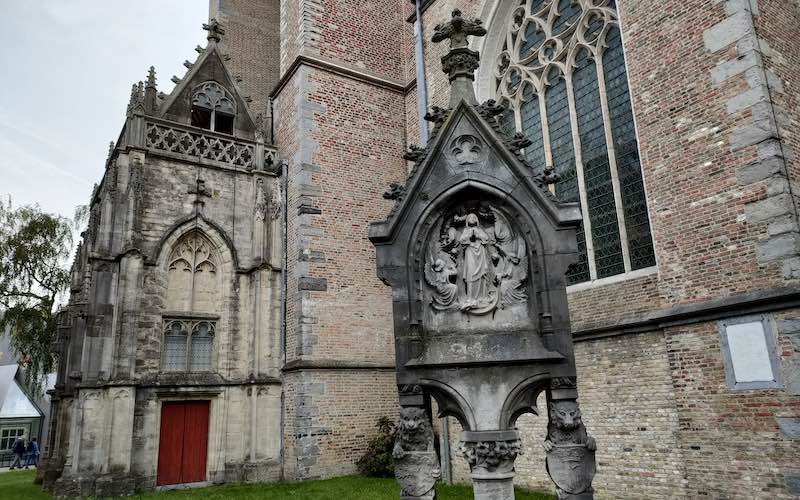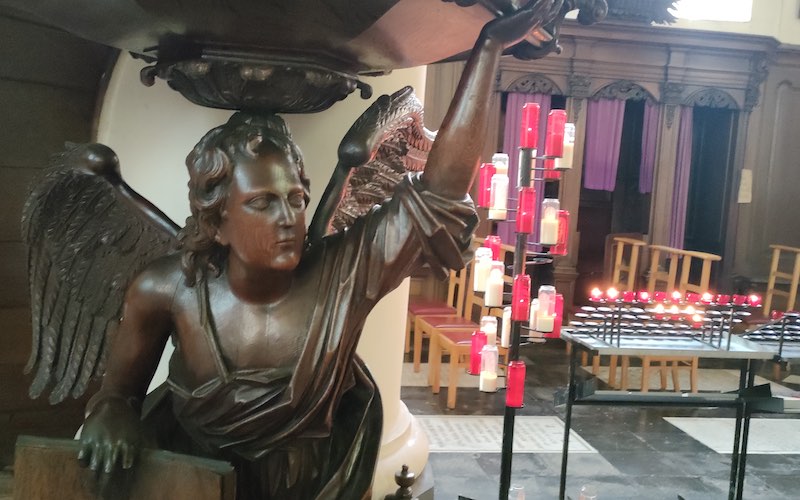If you are interested in religious architecture and medieval history then the Churches in Bruges will not disappoint! I spent two days in this stunning Belgian city. Although most people come to Bruges for a day trip, for me even two days were not enough! I could not get enough of the idyllic streets and Gothic and Baroque style Churches.
Disclosure: templeseeker.com is a participant in the Amazon Services LLC Associates Program and other affiliate advertising programs designed to provide a means for us to earn fees by linking to Amazon.co.uk, Get your Guide and other affiliated sites. Affiliate links may be used in this article on ‘Is Bruges worth visiting?’, but they do not impact on the price that you pay and they do help me to get this information to you for free.
Visiting Churches in Bruges
The good news is that most Churches in Bruges are free to enter. Some of them have a museum or treasury section that you will need to pay for (often between 5-10€) and you will need to take a card (VISA or Mastercard credit or debit) because, surprisingly, not many places in Bruges deal with cash.
Visiting the most Famous Churches in Bruges
You are greeted with stunning architecture everywhere you look in Bruges. If you have limited time in Bruges, then focus on on visiting the Basilica of the Holy Blood, Sint-Salvatorskathedraal (Saint Saviour’s Cathedral) and Onze-Lieve-Vrouwekerk (The Church of Our Lady). However, if you have more than one day in Bruges then I would encourage you to visit some of the lesser known (but still very popular) Churches – particularly the interactive Church of Jerusalem.
#1 Basiliek van het Heilig Bloed (Basilica of the Holy Blood)
The Basilica of the Holy Blood is a 12th Century Catholic Chapel famous for containing the relic of a vile containing cloth stained with the actual blood of Jesus Christ himself (or so it is believed). This is one of my favourite Churches in Bruges, due to its unique design.

Photography copyright: All the images in this blog are original photography by Amy Green and are property of @templeseeker (unless otherwise stated). Please do not use these without permission or without giving credit. If you would like to use any of these images please email: amy@templeseeker.com for permission.
The interior of the chapel is beautiful and if you go at 12 noon you may get chance to see and pay your respects to the relic (I was lucky enough to see the vile containing the blood of Christ).

Entrance to the chapel is free and you can go into the treasury for just 5€ where you will see the shrine of the precious blood (which is paraded round the city of Bruges once a year on ascension day), a tapestry dating back to 1673 and various art pieces (including a triptych from the early 16th century depicting Christ bearing the Cross, being speared and his resurrection.
#2 Sint-Salvatorskathedraal (Saint Saviour’s Cathedral)
Next on the list of Churches is Sint-Salvatorskathedraal (Saint Saviour’s Cathedral), which has held the title of cathedral since the re-establishment of the diocese of Bruges in 1834. The roof of the cathedral collapsed in a fire in 1839, and English architect Robert Chantrell was asked to restore it to its former glory. The tower was also commissioned to be higher than the Church of Our Lady (and can easily be seen and identified from the top of the Belfry).

Inside you will find a rood loft with a beautiful organ, various medieval tombs, Brussels tapestries and a collection of Flemish paintings (14th-18th Century).

#3 Onze-Lieve-Vrouwekerk (The Church of Our Lady)
The third ‘must-see’ Church in Bruges is the Church of Our Lady, a Roman Catholic Church dating mainly from the 13th, 14th and 15th centuries. It contains a museum which is home to Michelangelo’s Madonna and Child sculpture, amongst other artworks.

#4 Sint-Jakobskerk (Saint James Church)
Sint-Jakobskerk (Saint James Church) was built around 1240 and was expanded in 1459 to compliment the rising affluence of the city of Bruges. In the 17th and 18th Century the interior of the Church was remodelled to the Baroque style that you see today.
#5 Jeruzalem Kerk (The Jerusalem Chapel)
Located to the North East of the city in the Sant Anna Quarter and near to the Volkskundemuseum you will find the Jeruzalem Kerk (Jerusalem Church or Chapel in English). Interestingly, the Jerusalem Chapel was actually modelled on the Church of the Holy Sepulchre in Jerusalem, following a visit to Jerusalem by the Adornes family (an Italian merchant family from Genoa). The interior includes a tomb and a relic of the Holy Cross. The chapel is still used by the Adornes family for private services and events, but is sometimes used for art exhibitions, concerts and lectures.
Access the Church at the entrance to the Adornes Estate. This Church costs 10€ to visit, but it is worth it if you are interested in Christianity and Church history in Bruges.
While you are in the area, you might enjoy a walk up to Kruispoort gate – a 15th Century gate and one of the best preserved gates to the city.
#6 Heilige Magdalenakerk
Heilige Magdalenakerk (the Holy Magdelene Church) is a Roman Catholic Church located in the beautiful park setting of Koningin Astridpark, which once used to be a monastery garden. The Church, built in the mid-19th century, is one of the earliest neo-Gothic churches on the European mainland. The architectural style popular in England was introduced to Bruges via English immigrants, and thus appeared early in the Bruges street scene.

In addition to being a liturgical space, this ecological church is also the headquarters of YOT, a laboratory for philosophy of life.
In the 1960s, partly due to a disdain for neo-Gothic art, the colorful interior was painted white and an important part of the furniture and stained glass windows were lost. In the 1980s, various neo-Gothic decorative elements were restored.
Nowadays, in addition to being a liturgical space, this ecological church is also the headquarters of YOT, a laboratory for philosophy of life. Heilige Magdalenakerk is an interative Church where you can enjoy a 25 minute audio guide, enjoy the artwork, enjoy a 17m long swing (yes – a swing in a Church!) and enjoy a drink at the coffee bar.
#7 Sint-Walburgakerk (The St. Walburga Church)
The St. Walburga Church is a Roman Catholic 17th Century Church built in the Baroque style by the Jesuits. The Church has a dynamic facade and contains many sacred artefacts.
#8 Begijnhofkirk Sint-Elisabeth (Saint Elizabeth’s Church)
In Bruges, there is an unexpected tranquil monastery in the middle of the city called the Beguinage Monastery. Beguinage is a French word meaning a group of religious lay women who settled in Flanders in the second quarter of the 13th Century. The monastery grounds and the Church are free to enter but remember to show respect by observing silence and preserving the peacefulness.

In the middle of the Monastery grounds you will find Begijnhofkirk Sint-Elisabeth (Saint Elizabeth’s Church) – a pseudo-basilical church with Gothic and Baroque style features.
The first early Gothic church on this spot dates back to the mid-13th century. In 1584, a fire largely destroyed the church, with only the east facade almost completely spared. The rebuilding between 1604-1609 is probably a reconstruction of the previous church, the gable roof of the nave was raised. In a third phase, in the late 17th century to the early 18th century, the side aisles were constructed and the pointed arch windows were replaced by the current segmental arch windows. Restoration works were carried out in 1990-1991.
